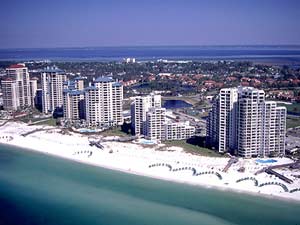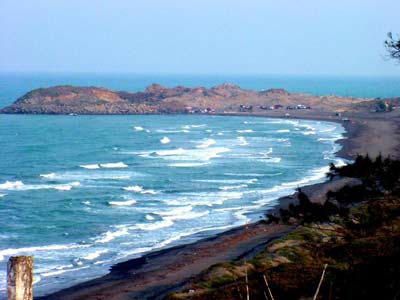The Gulf of Mexico is located in Southeastern North America, bordered by the Florida Peninsula of the United States, the Yucatan Peninsula of Mexico, and the island of Cuba, forming an oval shape. It stretches 1,609 km from east to west and 1,287 km from north to south, covering an area of 1.543 million km2, making it the second largest gulf in the world, surpassed only by the Bay of Bengal.  The average depth is 1,432 meters, with the deepest point reaching 3,789 meters. From the Gulf of Mexico, the Florida Strait leads to the Atlantic Ocean, while the Yucatan Strait opens up to the Caribbean Sea. Major ports include New Orleans in the United States, Veracruz and Tampico in Mexico, and Havana in Cuba.
The average depth is 1,432 meters, with the deepest point reaching 3,789 meters. From the Gulf of Mexico, the Florida Strait leads to the Atlantic Ocean, while the Yucatan Strait opens up to the Caribbean Sea. Major ports include New Orleans in the United States, Veracruz and Tampico in Mexico, and Havana in Cuba.
The Gulf of Mexico lies within tropical and subtropical regions, largely isolated from the open ocean, resulting in relatively high water temperatures, reaching 29oC in summer and about 20oC in winter. The warm North Equatorial Current of the Atlantic converges in the Gulf of Mexico, flows through the Florida Strait, and upon reaching the Atlantic, it merges with the warm currents from the equator heading north, forming the Gulf Stream (also known as the Mexican current), which flows north along the eastern coast of the United States. This current has a significant impact on the climate of the eastern coastal regions of the U.S., raising sea temperatures by 8oC in winter, making the area warmer. The confluence of warm and cold currents creates a rich fishing ground.
The Gulf of Mexico often experiences strong winds, especially from late summer to autumn, and the storms here can be quite terrifying, with wind speeds reaching up to level 12.
While the climate here is harsh, the region is rich in minerals. The coastal and continental shelf areas of the northwest Gulf of Mexico host abundant oil, natural gas, and sulfur deposits. Currently, both the United States and Mexico are exploring and extracting these resources.

(Photo: community)


















































